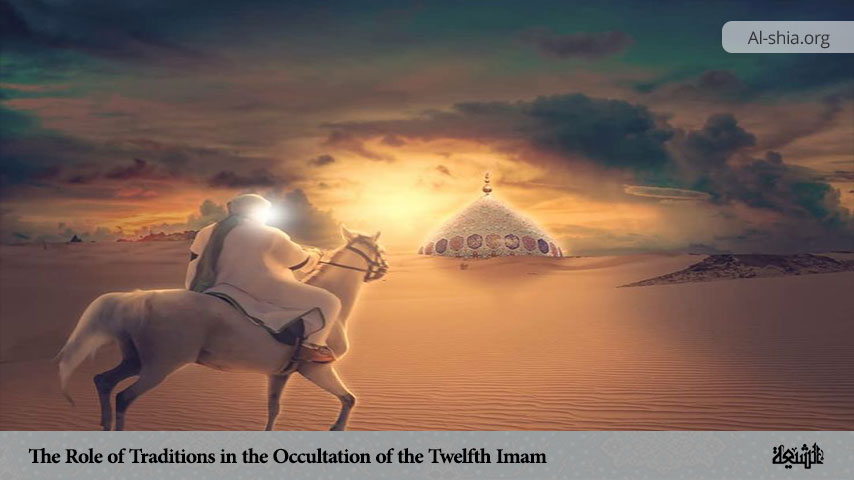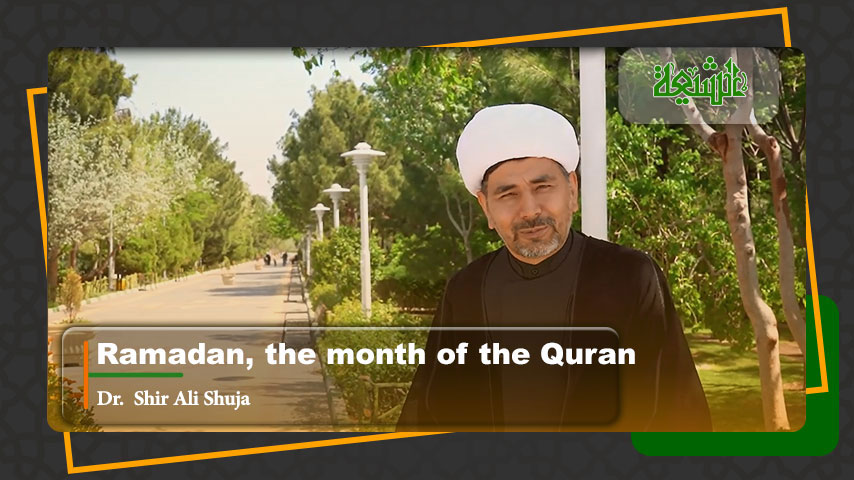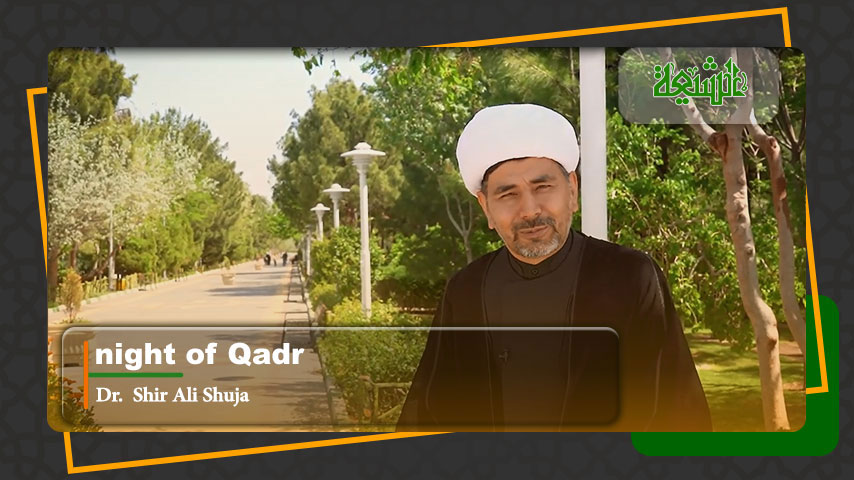After the martyrdom of al-Husayn, the pure Imams right from Imam `Ali ibn al-Husayn to Imam al-Hasan al-`Askari (PBUTH All) followed a quiescent policy towards the Umayyad and the `Abbasid. But they expected that all their suffering would be terminated by al-Qaim, whose rising in arms they were awaiting. The Imamites based their expectations on their interpretation of certain Quranic verses and on a number of traditions attributed to the Prophet concerning the political and religious role of al-Qaim.
Therefore, it is essential to discuss some of these Quranic verses and traditions in order to see their effect on the attitude of the `Abbasids towards the Imamites, and consequently their reactions to the question of the occultation (al-Ghaybah) of the Twelfth Imam.
1. The early usage of the term al-Mahdi
The term al-Mahdi, which means “the one who is guided by Allah”, is the passive participle of the stem “Hada”, “to guide”. A term that occurs twice in the Qur’an is the active participle of the same stem, al Hada, the Guide. The first verse states, “Allah is surely the Guide of those who believe”(1), while the second states, “But the Lord is a sufficient Guide and Helper”.(2) In the usage of the Qur’an the eighth form of the same stem, ihtada, “he accepted the guidance for himself”, is used strictly as a reflexive passive, whose participle is Muhtada. So Man, who is guided by Allah, is not simply guided but reacts himself to the divine guidance (hidaya), (3) either by instinct or intellect.
Through these two means, he can acquire knowledge of Allah, which leads him to worship Him by following His laws on earth. However, Allah’s laws cannot be discovered through these two sources of knowledge, so throughout the course of history, Allah has revealed His knowledge and laws to a group of people who have been divinely guided to lead mankind towards His straight path. These people are called “Prophets” and possessed charismatic qualities which enabled them to implement the commands of Allah and to lead the people without error. Hence they are called in the Qur’an al Hudat (sing. al-Hadi), because they were already rightly guided (muhtadin) by Allah. (4)
The term al-Mahdi (the guided one) has the same meaning as al-Muhtadi. However, it has been applied to certain individuals in the early Islamic period as an honorific title, while also being applied to al-Qaim. Many examples can be cited showing that the term al-Mahdi was used in these two senses. For example the poet Hassan b. Thabit (d. 54/673) applied the term al-Mahdi to the Prophet in a qasida when he says:(5)
Sorrow for the Mahdi who is buried! Best of those who walked on Earth, be not far! The poet Jarir applies this term to Ibrahim, the prophet. (6)
The Sunnites often applied it to the four caliphs after the Prophet, who were called al-Khulafa’ al-Rashidun al-Mahdiyyun, the divinely guided caliphs. (7) ‘Sulayman b. Surd called al-Husayn, after his martyrdom, Mahdi b. al-Mahdi. (8) For the theological usage of this term, according to Rajkowski, Abu Ishaq Ka’b b. Mati’ b. Haysu` al-Himyari (d. 34/654) was the first individual to speak of al-Mahdi as the Saviour. (9) But it is worth mentioning that the second caliph, `Umar b. al-Khattab had spoken of occultation before Ka’b.
When the Prophet died in 11/632, `Umar contended that Muhammad had not died but had concealed himself as Moses did and would return from his occultation. `Umar’s claim, however, was refuted by Abu Bakr, who reminded him of the Qur’anic verse revealing the death of the Prophet(10) which states: “Surely you shall die and they [too] shall surely die. Then surely on the Day of Resurrection you will contend with one another before your Lord”.(11) The follower of Ibn al-Hanafiyya (d. 81-4/700-3)(12), al-Mukhtar, who was in revolt in Kufa in 66/685, named him as claimant to the Imamate and called him al-Mahdi in the messianic context. (13)
Later, the name of Ibn al-Hanafiyya became associated with the Kaysaniyya sect, which denied his death and held that he was the promised Mahdi, who had concealed himself in Mound Radwa, and who would rise in arms to eliminate injustice. (14) TheKaysaniyya dogma played an important role in Islamic political history during the Umayyad period, since the `Abbasid propaganda, which brought about the collapse of the Umayyads, was in fact derived from this sect. (15)
The dogma of al-Kaysaniyya can be seen in the poetry of Kuthayyir (d. 105/723) and al-Sayyid al-Himyari (d. 173/789). The latter had followed this sect, but it is said that he became an Imamite after a discussion with al-Sadiq, who clarified for him that the concealed Imam mentioned by the Prophet was not Ibn al-Hanafiyya but the Twelfth Imam from the progeny of al-Husayn. (16) TheZaydites also applied the term al-Mahdi in its eschatological sense to their leaders who rose in arms against the `Abbasids, such as Muhammad al-Nafs al-Zakiyya (d. 145/762), Muhammad b. Ja`far al-Sadiq (d. 203/818), and Muhammad b. al-Qasim al-Talqan, who disappeared in the year 219/834. (17)
An example of the Zaydite usage of this term is recorded by Ibn Tawus,(18) who states on the authority of Ibrahim b. `Abd Allah b. al-Hasan, the brother of al-Nafs al Zakiyya, that the latter had rebelled hoping that Allah might make him the Mahdi promised by the Prophet: As for the Imamites, a considerable body among them applied the title of al-Mahdi in its messianic sense to each Imam after his death. This can be seen in the claim of al-Nawusiyya, al-Waqifa and the followers of al- `Askari, the eleventh Imam. After the death of al-Sadiq in the year 148/765 the Nawusiyya group held that he was al-Qaimal-Mahdi and that he did not die but went into occultation. (19)
The Waqifa group applied this title to the seventh Imam Musa al-Kazim (d.183/799) and denied his death, contending that he was al-Qaim al-Mahdi and that he would rise to fill the earth with justice after it had been filled with tyranny. (20) OtherImamites held that the eleventh Imam al- `Askari was al-Qaimal-Mahdi, (21) whereas the last important usage of this term was given to the Twelfth Imam, who became the magnate of the Imamites’ hope in their struggle for justice and equity. It is worth mentioning that all these claims relating to the eschatological usage of the term `al-Mahdi’ were based mainly on Prophetic traditions concerning a future restorer of Islam. Hence, it is essential to discuss the traditions of the Prophet and the Imams, especially these traditions which concern the Twelfth Imam, so as to see their role in the question of his occultation.
NOTES:
____________________________________
1. The Holy Quran: 22, 53
2. The Holy Quran: 25,33
3. EI1,art. “al-Mahdi”, 112.
4. Sachedina,op.cit., 6-7.
5. Ibn Hisham, Das Leben Muhammads (Wustenfeld, Gottingen, 1859), 2, 1024.
6. Goldziher, al-`Aqida wa-l-Shari’a, tr. Muhammad Yusuf (Cairo, 1378/1959), 327-8, 376-8.
7. D.Sunan, 4, 201; Ibn Maja, Sunan, 1, 16; Ibn A`tham al-Kufi, Kitab al-Futuh (Hyderabad, 1972), 5, 31, 34.
8. Tabari, 2, 546. Ibn A`tham reports a letter attributed to the Kufans, sent to al-Husayn b. `Ali encouraged him to rebel against the Umayyads, which used the title al-Mahdi for al-Husayn as an honorific adjective: Ibn A`tham, op. cit., 5, 47.
9. Rajkowski, op. cit., 166-7. There is evidence which supports the claim that Ka`b narrated traditions attributed to the People of the Book which predict the rise of al-Mahdi It is obvious from a line of poetry attributed to the poet Kutayr that those who applied this term to Muhammad b. al-Hanafiyya was influenced by Ka’b. This can be noted in Kuthayyir’s saying: Huwa al-Mahdi Akhbarnahu/Ka`bun Akhu al-Akhbar fi al-Huqab al-Khawali; al-Zubayri, Nasab Quraysh (Beirut, 1953), 41.
10. Kamal Al-Din, 30-2.
11. The Holy Quran: al-Zumar, 39, 30-1
12. Al-Nawbakhti thinks that Ibn al-Hanafiyya died in 81/700 (Firaq, 24), whereas al-Saduq puts his death in 84/703; Kamal, 36; Ikhtiyar,126.
13. B. Firaq, 33-4.
14. N. Firaq, 25-6; Milal, 111-2; B. Firaq, 17, 27-8,38.
15. N. Firaq, 29-30, 42-3. For a full account of the fact that the `Abbasid propaganda was the outcome of a branch of the Kaysaniyya movement, see al Ansari, Madhdhib ibtada`atha al-Siyasa fi al-Islam (Beirut, 1973), 152-8,199-214.
16. Kamal Al-Din,,32-4; al-Zubayri, op.cit., 41-2.
17. N.Firaq, 54; `Uyun, 155; Maqatil, 359; B. Firaq, 44.
18. Ibn Tawus, al-Iqbal, 53.
19. N.Firaq, 57; Kamal, 37.
20. al-Hasani, Sirat al-A’imma al-Ithna `Ashar (Beirut, 1977), 370.
21. Kamal Al-Din, 40.
















